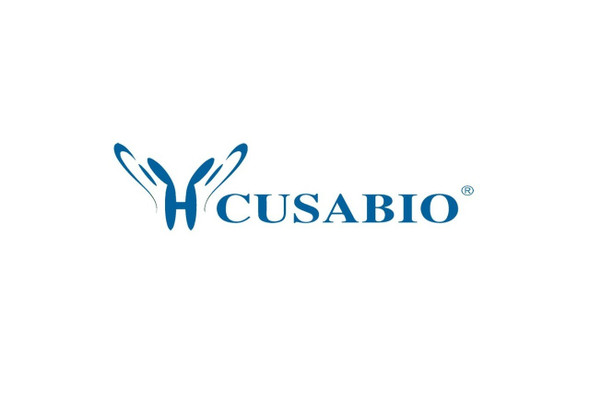Cusabio Human Recombinants
Recombinant Human Eukaryotic translation initiation factor 3 subunit E (EIF3E) | CSB-EP007534HU
- SKU:
- CSB-EP007534HU
- Availability:
- 13 - 23 Working Days
Description
Recombinant Human Eukaryotic translation initiation factor 3 subunit E (EIF3E) | CSB-EP007534HU | Cusabio
Alternative Name(s): Eukaryotic translation initiation factor 3 subunit 6 Viral integration site protein INT-6 homolog eIF-3 p48
Gene Names: EIF3E
Research Areas: Epigenetics and Nuclear Signaling
Organism: Homo sapiens (Human)
AA Sequence: MAEYDLTTRIAHFLDRHLVFPLLEFLSVKEIYNEKELLQGKLDLLSDTNMVDFAMDVYKNLYSDDIPHALREKRTTVVAQLKQLQAETEPIVKMFEDPETTRQMQSTRDGRMLFDYLADKHGFRQEYLDTLYRYAKFQYECGNYSGAAEYLYFFRVLVPATDRNALSSLWGKLASEILMQNWDAAMEDLTRLKETIDNNSVSSPLQSLQQRTWLIHWSLFVFFNHPKGRDNIIDLFLYQPQYLNAIQTMCPHILRYLTTAVITNKDVRKRRQVLKDLVKVIQQESYTYKDPITEFVECLYVNFDFDGAQKKLRECESVLVNDFFLVACLEDFIENARLFIFETFCRIHQCISINMLADKLNMTPEEAERWIVNLIRNARLDAKIDSKLGHVVMGNNAVSPYQQVIEKTKSLSFRSQMLAMNIEKKLNQNSRSEAPNWATQDSGFY
Source: E.coli
Tag Info: N-terminal GST-tagged
Expression Region: 1-445aa
Sequence Info: Full Length
MW: 79.1 kDa
Purity: Greater than 90% as determined by SDS-PAGE.
Relevance: omponent of the eukaryotic translation initiation factor 3 (eIF-3) complex, which is required for several steps in the initiation of protein synthesis . The eIF-3 complex associates with the 40S ribosome and facilitates the recruitment of eIF-1, eIF-1A, eIF-2:GTP:methionyl-tRNAi and eIF-5 to form the 43S pre-initiation complex (43S PIC). The eIF-3 complex stimulates mRNA recruitment to the 43S PIC and scanning of the mRNA for AUG recognition. The eIF-3 complex is also required for disassembly and recycling of post-termination ribosomal complexes and subsequently prevents premature joining of the 40S and 60S ribosomal subunits prior to initiation . The eIF-3 complex specifically targets and initiates translation of a subset of mRNAs involved in cell proliferation, including cell cycling, differentiation and apoptosis, and uses different modes of RNA stem-loop binding to exert either translational activation or repression . Required for nonsense-mediated mRNA decay (NMD); may act in conjunction with UPF2 to divert mRNAs from translation to the NMD pathway . May interact with MCM7 and EPAS1 and regulate the proteasome-mediated degradation of these proteins.
Reference: "The translation initiation factor eIF3-p48 subunit is encoded by int-6, a site of frequent integration by the mouse mammary tumor virus genome." Asano K., Merrick W.C., Hershey J.W.B. J. Biol. Chem. 272:23477-23480(1997)
Storage: The shelf life is related to many factors, storage state, buffer ingredients, storage temperature and the stability of the protein itself. Generally, the shelf life of liquid form is 6 months at -20?/-80?. The shelf life of lyophilized form is 12 months at -20?/-80?.
Notes: Repeated freezing and thawing is not recommended. Store working aliquots at 4? for up to one week.
Function: Component of the eukaryotic translation initiation factor 3 (eIF-3) complex, which is required for several steps in the initiation of protein synthesis
Involvement in disease:
Subcellular Location: Cytoplasm, Nucleus, PML body
Protein Families: EIF-3 subunit E family
Tissue Specificity: Ubiquitously expressed. Expressed at highest levels in appendix, lymph, pancreas, skeletal muscle, spleen and thymus.
Paythway:
Form: Liquid or Lyophilized powder
Buffer: If the delivery form is liquid, the default storage buffer is Tris/PBS-based buffer, 5%-50% glycerol. If the delivery form is lyophilized powder, the buffer before lyophilization is Tris/PBS-based buffer, 6% Trehalose, pH 8.0.
Reconstitution: We recommend that this vial be briefly centrifuged prior to opening to bring the contents to the bottom. Please reconstitute protein in deionized sterile water to a concentration of 0.1-1.0 mg/mL.We recommend to add 5-50% of glycerol (final concentration) and aliquot for long-term storage at -20?/-80?. Our default final concentration of glycerol is 50%. Customers could use it as reference.
Uniprot ID: P60228
HGNC Database Link: HGNC
UniGene Database Link: UniGene
KEGG Database Link: KEGG
STRING Database Link: STRING
OMIM Database Link: OMIM










